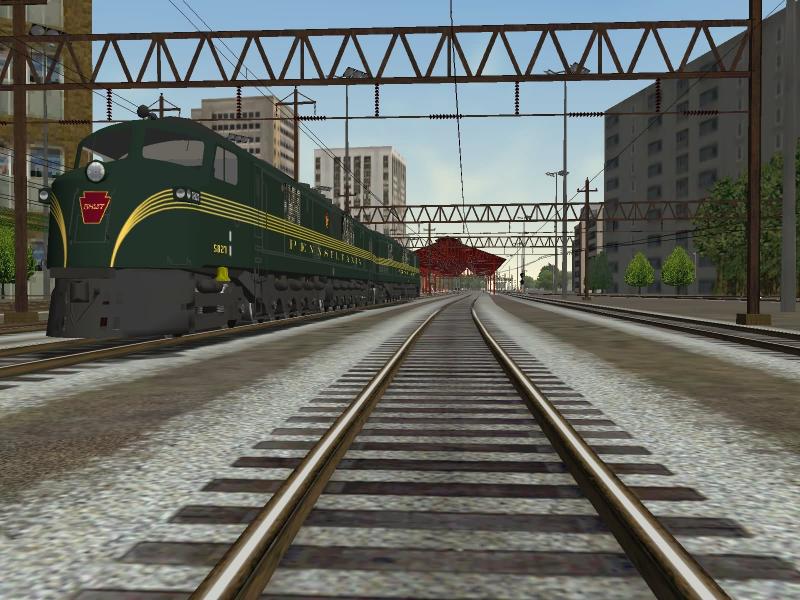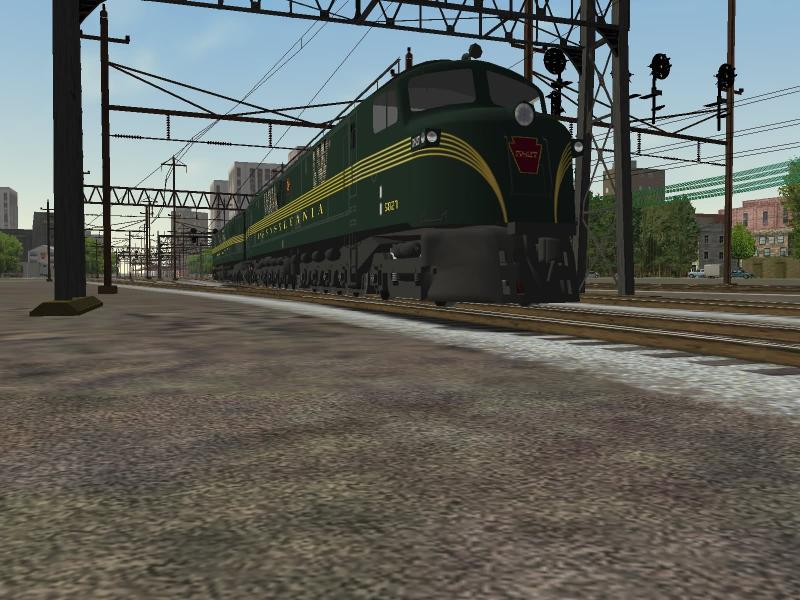Don't mean to drag up old posts and I'm sorry to reply so late, but I just found this thread again...
If by "bank" you mean a draw-barred set (or a set like the original FT demonstrators), the answer is yes. I believe the Pennsylvania was the only owner that ran them as permanent sets of two 3000 HP units. This was general practice for all the assignments the centipedes held on the Pennsy, even when serving helper service on Horseshoe Curve or Belmont (just outside Philadelphia). Originally built as Class BP-60 (Baldwin Passenger 6000 HP) and assigned to name passenger trains, the centipedes proved unreliable and were detuned and demoted to BF-50 (detuning consisted of removing troublesome turbochargers = 2500 HP each) and assigned to freight service. Apparently they weren't reliable enough for that either. They were reassigned to class BH-50 and served out their lives as helpers. I've seen mention of them further relegated to serving as hump engines, but don't know for sure.
While I'm not sure if SAL de-tuned their units, I believe they all ran as singles. Their story was pretty much the same as PRR. Unit #4500 was delivered in the citrus passenger striping and reportedly spent some time heading passenger trains (she was built with a steam generator and water tanks). The idea was a big powerful locomotive that could drag a train over the whole road without any assistance. In reality, the centipedes often needed assistance to go anywhere. Blown turbo's, engine fires, electrical problems, complex maintenance issues, etc. All the subsequent SAL units were ordered as freight engines (#4500 was repainted, modified and also re-assigned to this job). I don't know how they ended their service, except that they were scrapped like all their sisters between 1957 and 1960.
The other major owner of the DR-12-8-3000 (some call them DR-12-8-1500/2) was NdeM (Nacionales de Mexico). These units faired much better than their American cousins. NdeM even sent them back to Baldwin to be rebuilt as 3400 HP units. It's possible that many of the design glitches were resolved in these units, because they lasted much longer. We know that they served well into the 1960's (some claim later). Wikipedia had this photo of the units being serviced in 1959...
http://upload.wikimedia.org/wikipedia/en/d/d3/NdeM_Centipedes.jpg
These units are wearing the original black and red paint under a ton of dust.
Some final tidbits...
The first centipede, SAL #4500 was actually built on the frame on an earlier experimental Baldwin unit, the first BLW #6000 (Model 4-8+8-4-750/8-DE). built about 1939. This original design was to be powered by eight 750 HP Maybach (German units built under license) V-8 diesels (6000 HP in a single unit). Each Maybach, the generator it powered and other support equipment were mounted on a removable modular frame. Each individual unit could be slid out of the body for replacement within a half hour. The individual power modules were meant to drive each of the primary axles. The experiment never ran with more than four modules (I believe only two were actually used) and never achieved its full rating. The unit was stored at Eddystone until resurrected in 1945 with a more conventional prime mover (2 1500HP Baldwin built diesels) and a new body shell. The patent drawings for the "baby face" cab design submitted in 1946 show the citrus striped nose of SAL #4500.
http://www.google.com/patents/about?id=hLt...ive+body+design
The second BLW #6000, the centipede pair used as demonstrators, was actually ordered by the Union Pacific as UP #998 and #999. The order was canceled and Baldwin repainted the units in their demo blue and cream. They were tried on a number of roads, including C&O and B&O, but were never sold. These units are sometimes mistaken for the original Maybach powered #6000 (even credited as the ancestors of SAL #4500) but there is really no way to mistake the baby face units with the earlier 4-8+8-4-750/8-DE prototype.
The first #6000...
http://www.trains.co...=cs1-e06_38.jpg
The second #6000...
http://www.northeast.railfan.net/images/blw6000.jpg
Make's the baby face look almost elegant.
Here's a cross section showing the mechanical layout of the 4-8+8-4-750/8-DE prototype
http://baldwindiesels.railfan.net/engines/6000-1.jpg
I would think this might be a road superintendents worst nightmare.
Apparently the Baldwin catalog offered the centipedes with additional traction motors on the leading and trailing trucks. The resulting DR-12-12-3000 was never ordered by anyone, but thinking of the tractive effort of 4 additional axles makes one wonder.



 Log In
Log In Register Now!
Register Now! Help
Help



